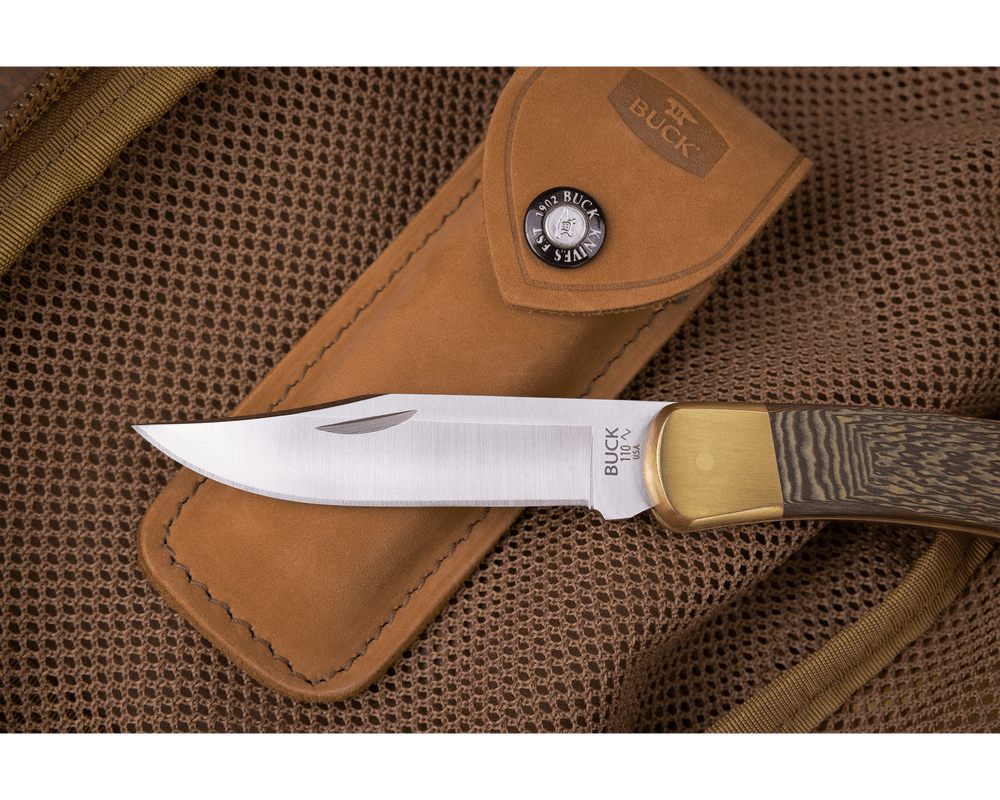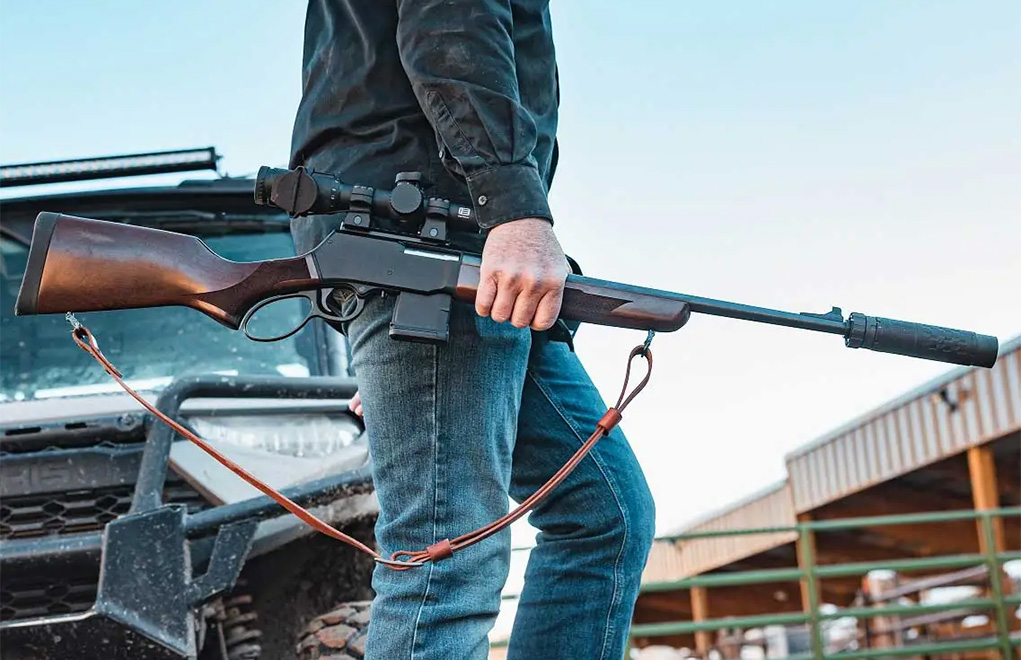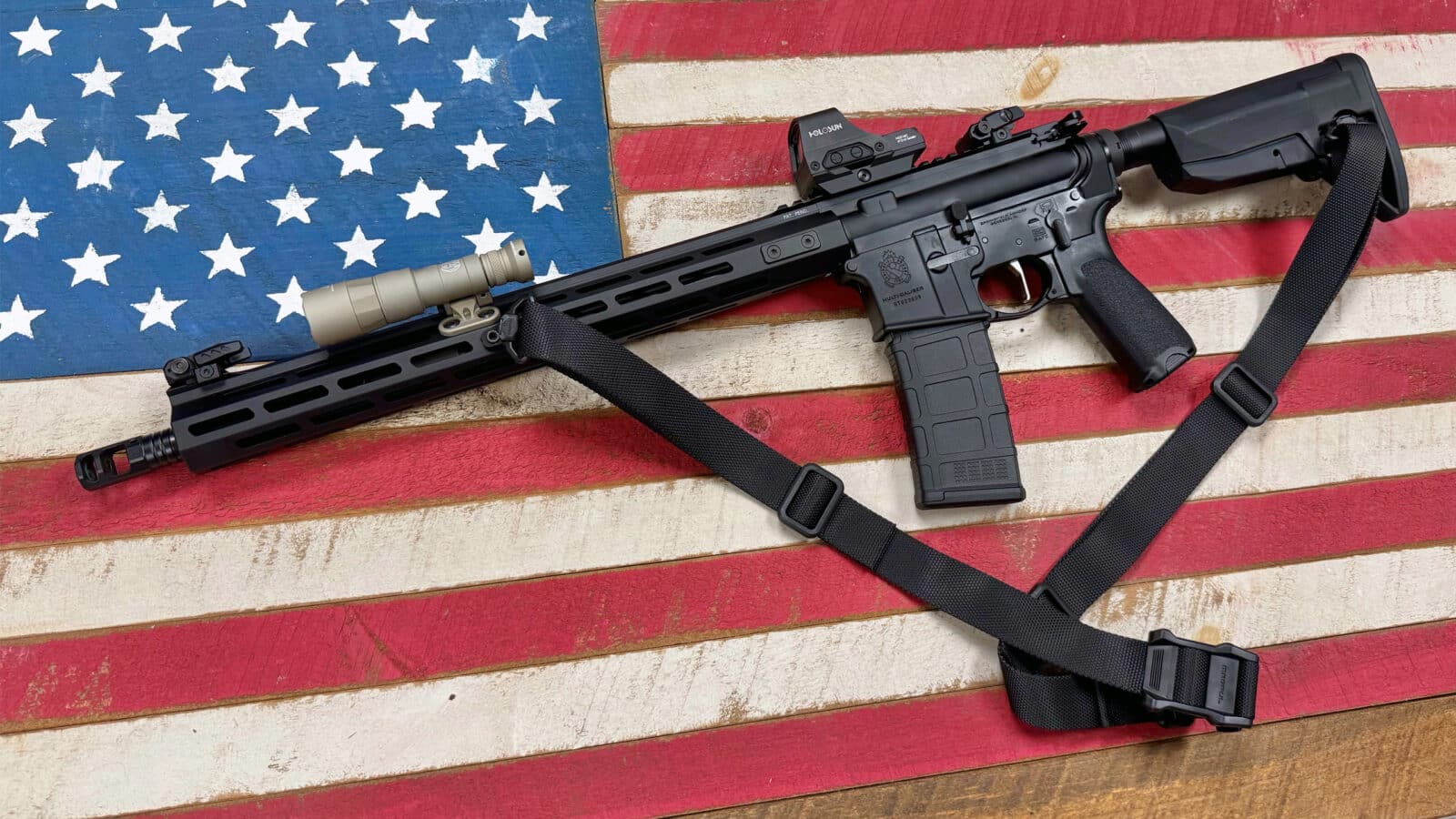We Pit Low-Power Variable Optics against Red Dots with Magnifiers
Written by Dave Merrill and published in RECOIL issue #51, updated July 2024 by David Lane
Lately, low-power variable optics (LPVO) dominate the CQB optic market, but magnifiers for red-dot sights have graced many a rifle for more than 20 years. To be fair, the popularity of magnifiers has waned, but we’re beginning to see more of them on rifles again.
The purpose of this article is to give you a clear pro/con of each setup so you can make the decision of what’s best for your needs. Understand that since we’re discussing these products in general and not each and every SKU out there, there’ll be some outliers.
So if something doesn’t apply to your favorite pet LPVO or RDS, that’s 100 percent A-OK. Think about each use case, and compare and contrast with your own anticipated uses.
| LPVO | RED DOT + MAG | WINNER | |
|---|---|---|---|
| EYE RELIEF / OFF-ANGLE VIEWING | Eye box is unavoidable | Mag has eye box, RDS does not | RDS+MAG |
| BATTERIES | Etched reticles never die | No power, no dot | LPVO |
| DAYLIGHT BRIGHTNESS | SFP comes close but lacks power | RDS can be turned up to Eye of Sauron level | RDS+MAG |
| PASSIVE NVG USE | Doable, but not easy and causes neck pain | Big window makes NVG easy and comfortable | RDS+MAG |
| PRECISION | Fine reticles are precise | multi-MOA dots aren’t precise | LPVO |
| RANGING | MIL/MOA marks + math | Most RDS don’t have range marks | LPVO |
| SPEED | With training, LPVO can be fast | RDS is fast naturally | DRAW |
| MAGNIFICATION | x6, x8, and x10 are standard | x3 & x4 are standard, some models allow x5 or x6 | LPVO |
| COST | Single large cost for optic + mount | One step at a time and mounts are included | RDS+MAG |
| PARALLAX | Adjustable parallax extremely uncommon | Paraallax adjustment generally not required | RDS+MAG |
| DURABILITY | Great LPVOs are durable enough | Top tier RDS are extremely hard to kill | RDS+MAG |
| WEIGHT | Glass + mount adds up | New Micro Magnifiers Cut Weight | RDS+MAG |
LPVO Vs. RED DOT + MAGNIFIER
EYE RELIEF / OFF-ANGLE VIEWING
WINNER: RDS + MAG
Eye relief varies greatly amongst LPVOs depending on brand and model, but the eye box in any of them is smaller than that of the most basic RDS.
While on the bench or flat range it may not seem to be an issue, once you start getting weird and shooting from unconventional positions, the need for eye relief really rears its head. The maximum viewing angle of a RDS is invariably larger simply due to the design of the scope body itself. The larger the window and shorter the body, the better the maximum off-axis viewing angle.
Of course, this only applies while a RDS doesn’t have a magnifier behind it. Once you add a magnifier, you’ll run into similar issues as with LVPOs. But, when both are used at 1x power, the difference is obvious. There are some ways around this with an LPVO, namely using a piggybacked MRDS or offset irons, at the expense of additional gear hanging on your rifle.
BATTERIES
WINNER: LPVO
Most modern LPVOs use a common watch battery for reticle illumination. When an LPVO battery dies, it’s very irritating, but the optic still works fine since the etched or wire reticle remains. With most RDS, a completely dead battery means a dead optic.

We say most because there are some older designs that use self-powering tritium or fiber optics to light their reticle. But contemporary RDS largely rely on a battery-powered LED or laser to project their reticle.
We’ve yet to see an LPVO with the battery life of an Aimpoint Comp M4, though, but auxiliary reticle illumination isn’t necessary for the optic’s basic functionality.
DAYLIGHT BRIGHTNESS
WINNER: RDS + MAG
While everyone’s eyes are different, the search for “daylight bright” LPVOs is coming to an end, but it still remains an issue. While an LPVO works without illumination, at lower magnification settings, a bright reticle brings a significant speed advantage, especially on targets without high contrast.
Second focal plane LPVOs with fixed reticles have an easier time in this respect compared to first focal plane scopes with reticles that change size according to the optic’s magnification level, but even a $50 RDS beats the pants off of anything but the most expensive LPVO.
PASSIVE NVG USE
WINNER: RDS + MAG
Passive night vision means using a viewer that doesn’t project lasers or illuminators for aiming or shot spotting. The advent of inexpensive IR cameras and night vision devices marked a new chapter of night fighting.

At one time, soldiers only worried about near-peer forces matching their nighttime combat capabilities. But these days, anyone with a $25 cell phone with the IR filter removed can see where an IR laser is coming from.
Thus, we’ve seen many tactics shift toward the use of passive night vision devices. A RDS with a night vision mode is easier to view while wearing NODs than an LPVO, and the same maximum viewing angle limitations also apply.
Further, it’s rare to see an LPVO with a night vision setting, so using one risks serious bloom in your tubes, even at lower brightness settings.
PRECISION
WINNER: LPVO
The clear winner in this category is the LPVO simply because a wire or etched reticle can be made infinitely more complex than an LED-reflected or hologram-projected red-dot sight.

Some companies like EOtech made some models with bullet drop compensating reticles built-in, but they’re hard-coded for a narrow range of rifle and ammunition combinations … and the aiming point looks like a big mess without the magnifier at 1x.
Additionally, some people, especially with astigmatism, will see smearing or artifacts in an RDS’ reticle, making them less precise than LPVO etchings. Many will find magnifiers help mitigate this. Also, even if you don’t have a Christmas Tree Tremor3 reticle, LPVOs usually have toolless windage and elevation adjustments allowing one to dial on the fly, if need be.
RANGING
WINNER: LPVO
The LPVO wins the ranging fight for the same reason it cleanly rules the precision category: the reticle design. Both MIL and MOA reticles can easily range objects of known sizes, along with a little math, but ranging becomes much harder with a red dot.
The EOtech and similar reticles have a bit of an edge here compared to a plain dot because the 65MOA circle in the reticle can be used as a rudimentary ranging device to calculate distance and holdovers, but it can’t offer the precision that a dedicated LPVO ranging reticle is capable of.
SPEED
WINNER: DRAW
Both the LPVO and RDS + mag have positive points in their favor regarding speed.

The common knowledge is that at 1x a RDS has the edge, but 3-gun shooters have effectively demonstrated that with training there’s no significant difference between the two in terms of shots on target unless you’re in a situation where you cannot achieve a good cheekweld.
In terms of speed of changing magnification, engaging a modern magnifier in a flip mount, such as the EOtech G43 and G45, takes only a smack and a split second. Even with a cattail installed on an LPVO, the nature of gas-purged optics makes them slower to rotate and adjust.
MAGNIFICATION
WINNER: LPVO
LPVOs have the edge on the higher ends of magnification, though it’s less significant for older 1-4x or newer 1-6x LPVOs.

At 6x-and-under you’ll typically dial your magnification all the way up or all the way down, but at 8x and above, you may find yourself using mid-power levels; twist a bit for target identification and ranging and then back down, if desired or required.
COST
WINNER: RDS + MAG
The middle market of optics has come a long way in the last five years, but you still end up paying significantly more for a top-of-the-line LPVO when compared to a RDS and magnifier. And that cost cuts in even more ways.
With an LPVO in addition to a mount for the optic itself, you have to eat all of that cost all at once in order to have something usable. A RDS can be purchased separately than a magnifier, and they both typically come with mounts.
Provided they have the same height mounts, a given RDS or magnifier has cross-brand compatibility and either or both can be updated at your leisure.
PARALLAX
WINNER: RDS + MAG
Despite what marketing departments will tell you, there’s no such thing as a parallax-free optic — it’s just that with a RDS, parallax is usually too small to make much of a difference in many situations.

Variable power optics typically won’t have a parallax adjustment or a so-called “side focus” knob unless they’re above 10x, because the effect exacerbates with magnification.
As Alex Hartmann discusses here, taller mounts on an LPVO can cause more shooter-induced parallax.
DURABILITY
WINNER: RDS + MAG
Even inexpensive red dots are increasingly durable. Hell, we set a Vortex Sparc II on fire in RECOIL Issue 19, and it still worked.

The number of glass elements that need to be held in place in an LPVO makes it inherently less durable, but companies have made huge strides in recent years with new materials. Some have even been experimenting with things like synthetic polymer lenses and optic bodies made of exotic materials.
As the U.S. military increasingly implements the use of LPVOs, it’s inevitable they’ll bridge the gap.
WEIGHT
WINNER: RDS + MAG
LPVOs have gotten lighter, but not by much. Red dots are still lightweight, and newer magnifiers don’t add much to that equation. Plus, you can remove the magnifier if you don’t need it.
While the difference isn’t major and will depend on your setup, it’s safe to say that LPVO is going to be heavier almost every time. If you choose a chunky red dot, this often means you’re dramatically increasing the durability by adding something like metal shrouds as seen on EOTech, SIG Romeo 8T, or Lead & Steel LP-1. Adding weight to an LPVO doesn’t have that benefit.
Very typical numbers using some examples:
- Vortex Razor LPVO (both 1-6x and 1-10x): 21.5 Oz + Unity FAST mount: 7.5 Oz = 29 Oz total
- SIG Sauer Romeo 4T-Pro: 6.3 Oz + SIG Juliet Micro 5x: 9.6 Oz = 15.9 Oz
- EOTech EXPS: 11.2 Oz + EOTech G43: 11.3 Oz = 22.5 Oz
LOOSE ROUNDS
If we simply compare the number of wins for each category, you may get the impression we’re bigger fans of the RDS + magnifier than the LPVO.
But that’s not the case; both are excellent tools when used properly. The LPVO allows for engagement at greater distances with greater precision, while the RDS is better for close range, funny angles, and NVG use.
As manufacturing technology increases, gaps between these systems will continue to diminish — and that’s a good thing.
More on Sights, Optics, and Scopes

NEXT STEP: Download Your Free Target Pack from RECOIL
For years, RECOIL magazine has treated its readers to a full-size (sometimes full color!) shooting target tucked into each big issue. Now we’ve compiled over 50 of our most popular targets into this one digital PDF download. From handgun drills to AR-15 practice, these 50+ targets have you covered. Print off as many as you like (ammo not included).
Get your pack of 50 Print-at-Home targets when you subscribe to the RECOIL email newsletter. We’ll send you weekly updates on guns, gear, industry news, and special offers from leading manufacturers – your guide to the firearms lifestyle.
You want this. Trust Us.

Read the full article here












Leave a Reply